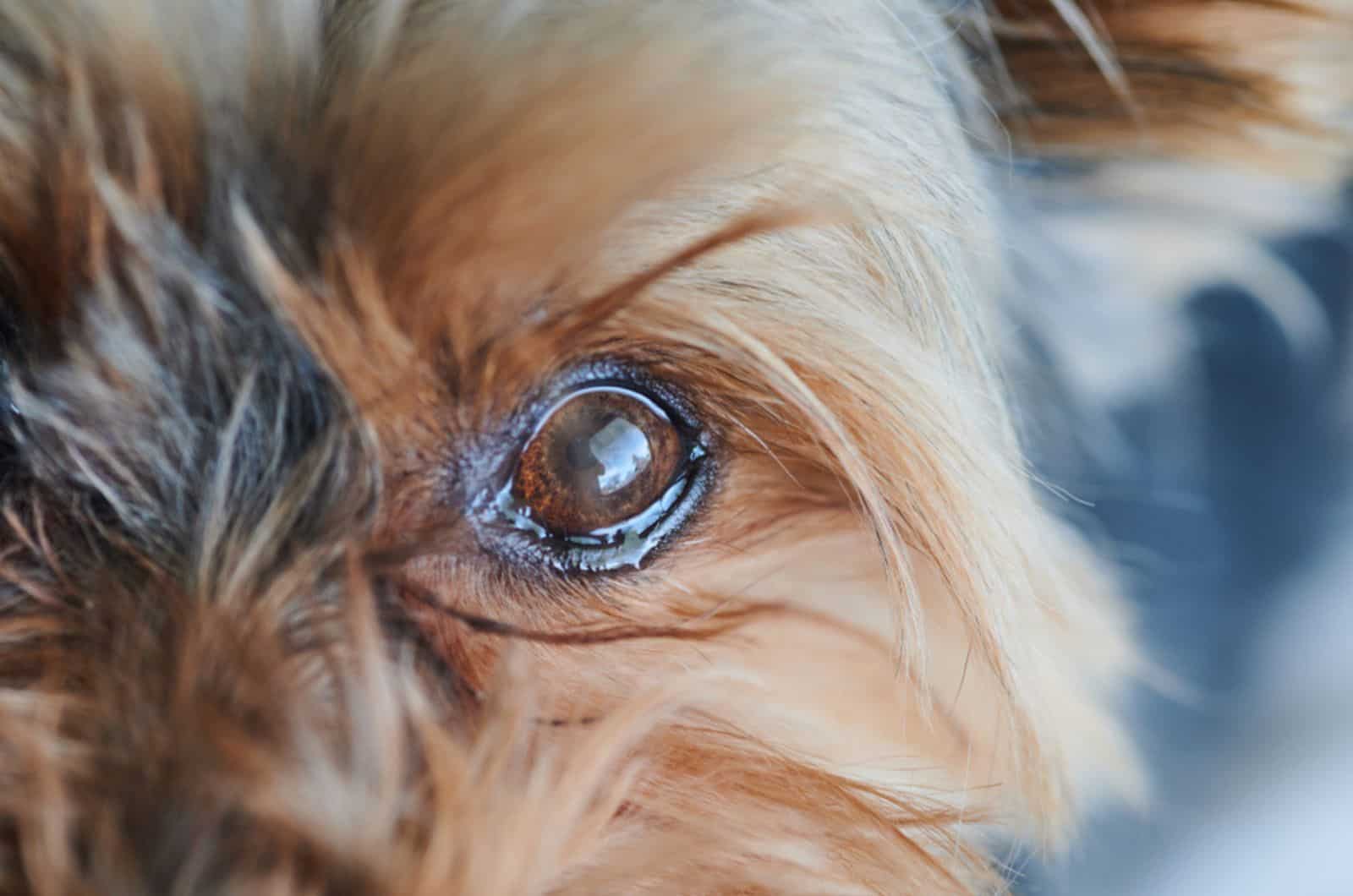Is your fur ball giving you the “puppy eyes” more than usual? Well, he might not be asking for extra treats this time!
If you’ve taken a closer look and asked yourself why your dog’s eyes are watery, then you are on the right path to addressing a potential health problem.
While there are no exact statistics on the number of dogs affected by watery eyes, it is a common issue that many pet owners face. So, don’t worry – you’re not alone!
Epiphora in dogs is what we call watery eyes (1). Now, I don’t think your dog is crying because you don’t feel like going out for a walk.
Your dog can look like he’s crying due to a variety of factors, including allergies, irritation, or a blocked tear duct.
Let’s find the right answer!
1. Furry Face
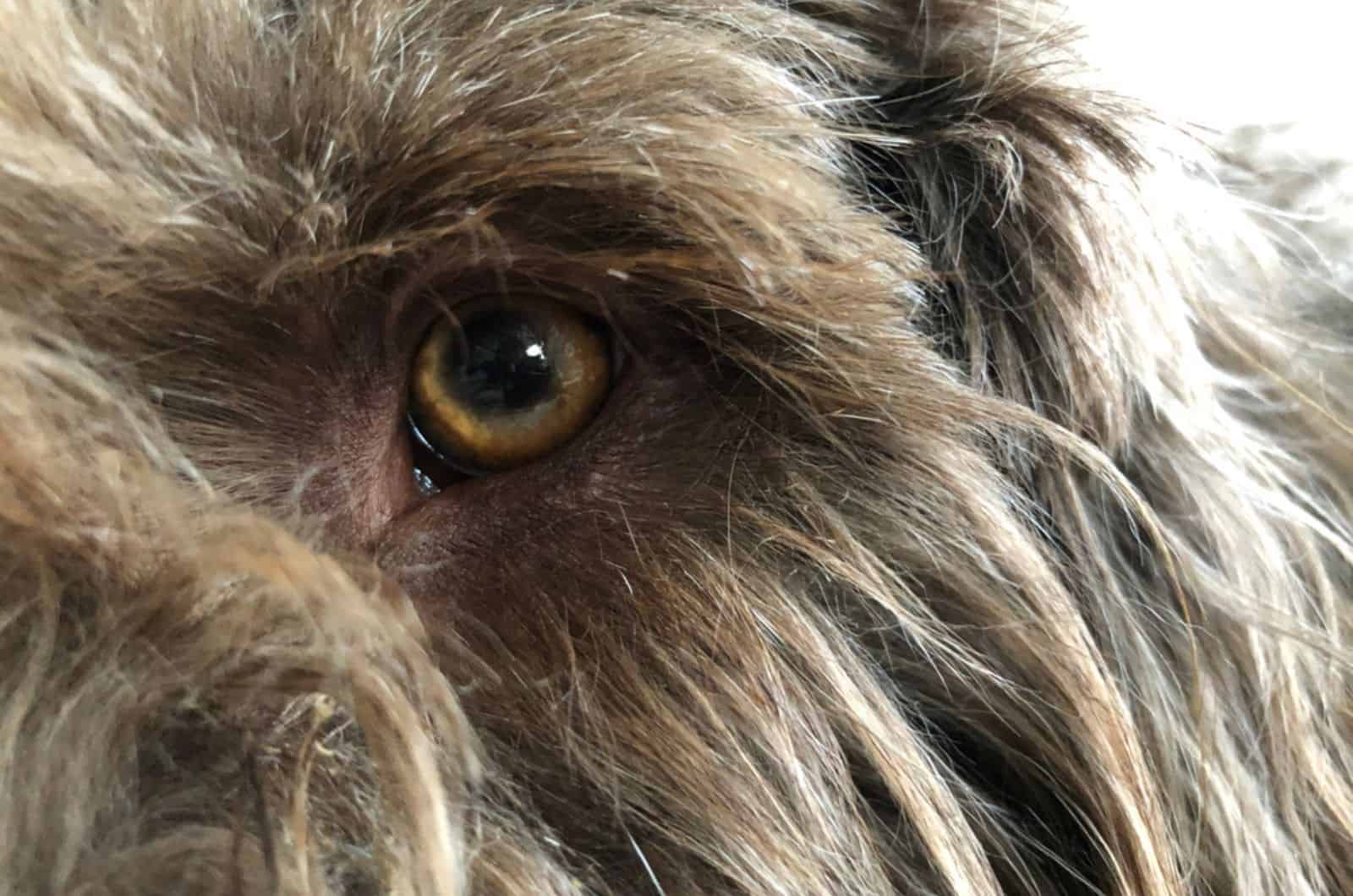
Both big and small fluffy dog breeds are cute, but their excessive facial hair can block their tear ducts. This can leave them with eyes that are watery and weepy.
How To Help Your Dog
To prevent this, you can either cut the hair that is getting into their eyes, or put it in a cute ponytail!
2. Facial Anatomy That Doesn’t Let The Tears Flow
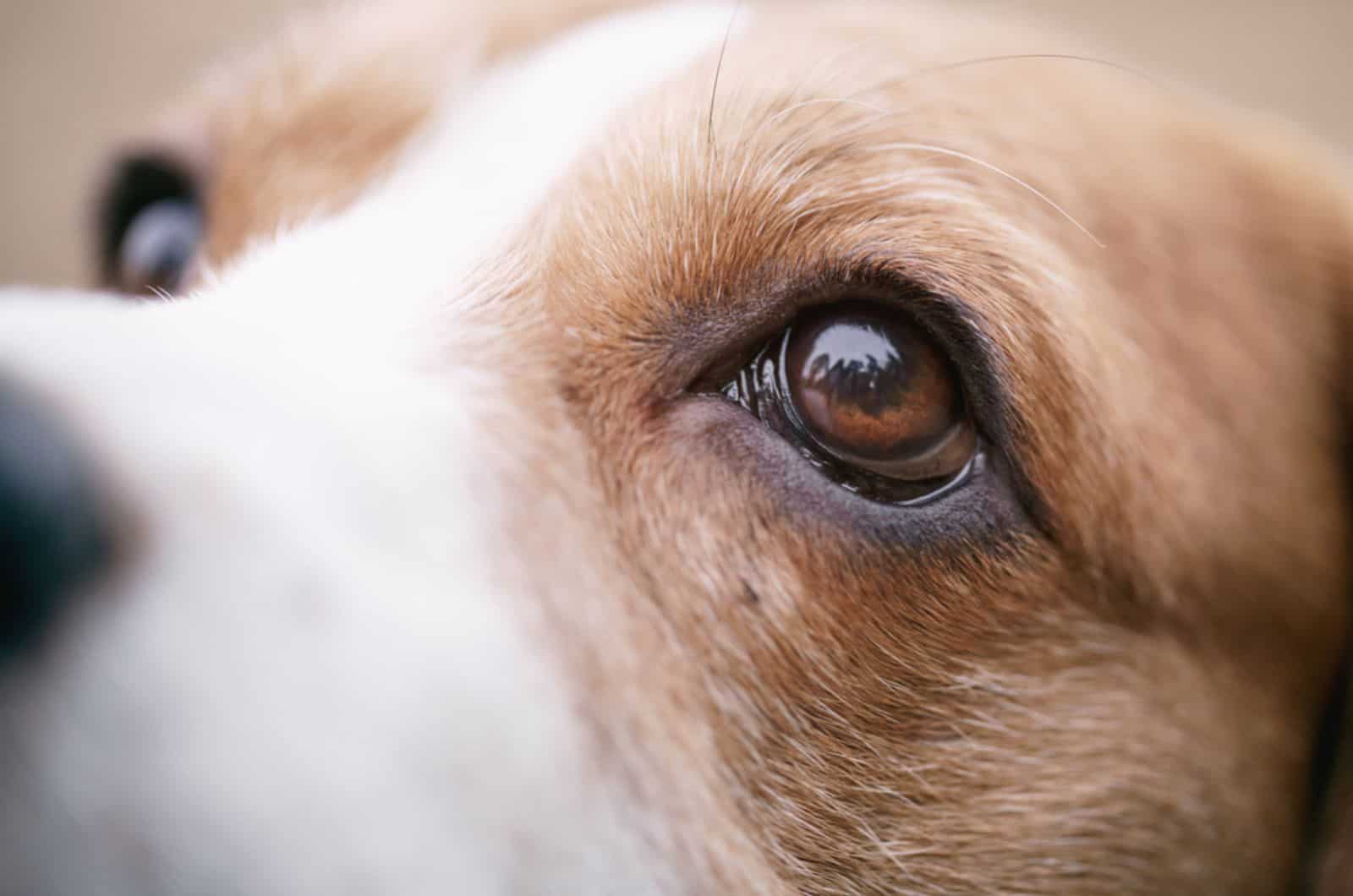
Brachycephalic dog breeds like French Bulldogs, Pugs, Shih Tzus, and Boston Terriers have short snouts, flat faces, and bulging eyes.
Such skeletal structure can make it tough for tears to drain properly. Instead, they can end up pooling on their cute little faces, making them look like they’re always crying.
How To Help Your Dog
You can’t change your dog’s facial anatomy, but you can help the tears from flowing from his eyes by using some medication.
Medicated eye drops and ointments may help promote tear production and reduce inflammation in the eyes. But before you take action, make sure to call your vet!
3. Eyelashes Growing In A Wrong Direction
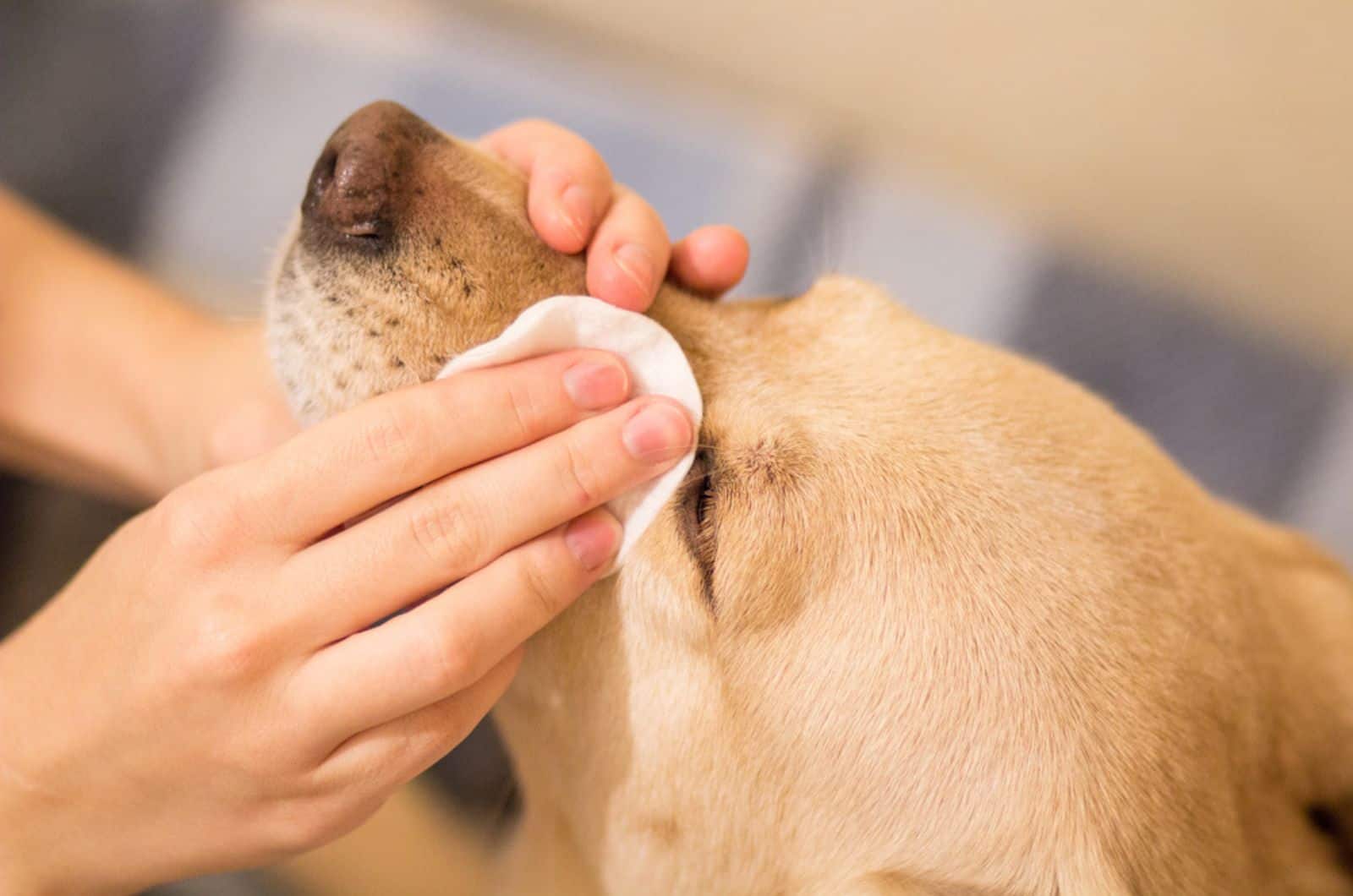
Puppy eyelashes can grow in different directions. This can cause all kinds of eye irritation and discomfort.
Those pesky lashes can scratch the surface of the eye, leading to redness, swelling, and excessive tearing.
How To Help Your Dog
If the troublesome lash does not fall off on its own, you may want to have it removed by a veterinary ophthalmologist.
4. Irritants

Everything from dust and dirt to cleaning products and cigarette smoke can be labeled as an irritant for a dog’s eyes. Such irritants can cause dry eyes, eye irritation and watery eyes in our canine companions.
How To Help Your Dog
One easy fix is to simply keep the environment clean and free of potential irritants. Make sure to use pet-friendly cleaning products!
5. Allergies
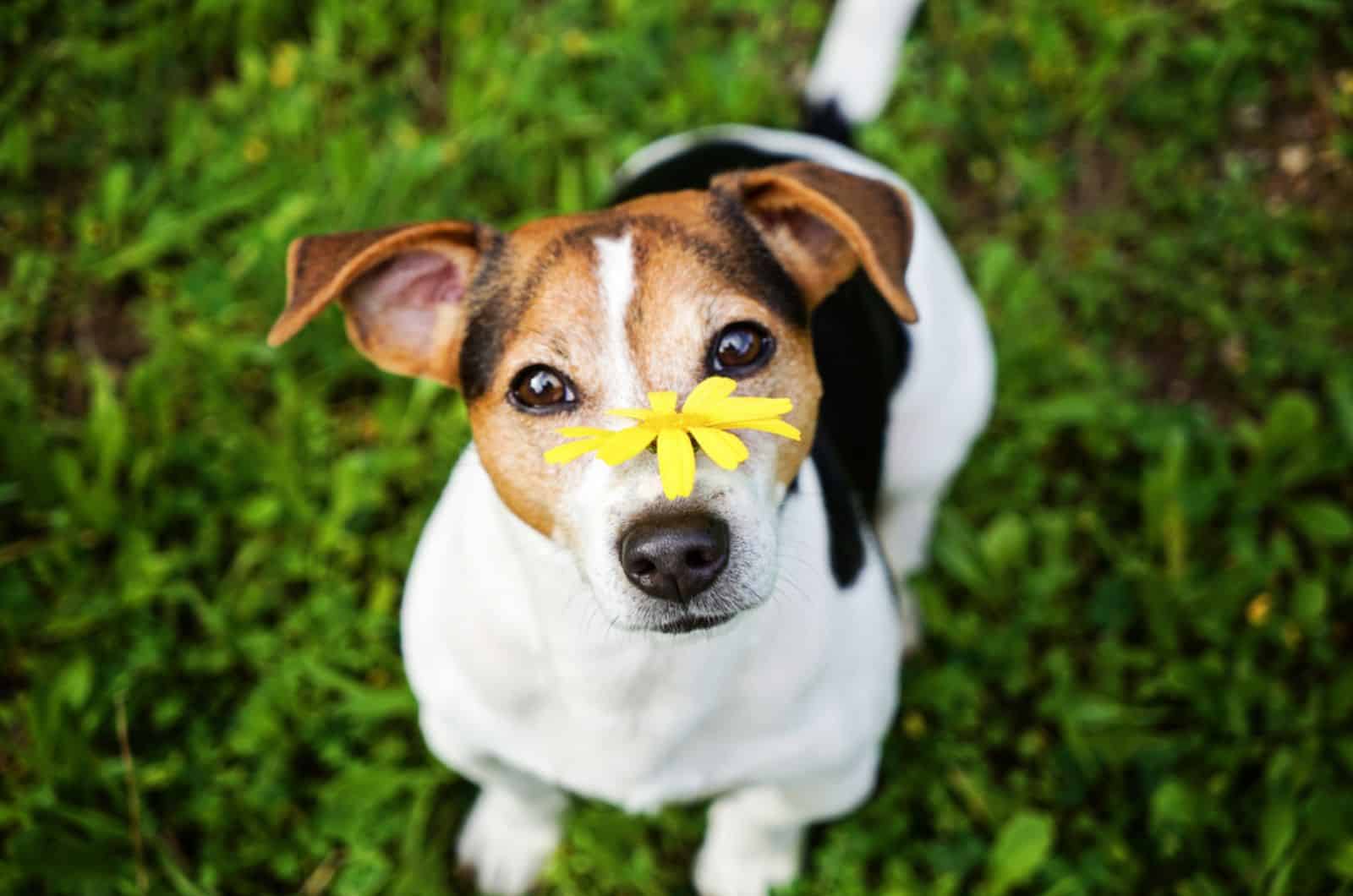
If you’re suffering from seasonal allergies yourself, then you know how your eyes get watery. Dogs can suffer from seasonal allergies that cause all kinds of sneezing, itching, and yes – watery eyes.
Whether it’s pollen, mold, or pesky dust mites, those allergens can wreak havoc on our pup’s eyes.
How To Help Your Dog
Keep your pup’s fur clean and make sure to consult with your vet if their symptoms become more severe. You may want to do some allergy testing as well.
Also, make sure to keep his environment free from dust, pollen, and other potential allergens that may be causing watery eyes.
6. Trauma, Punctures, Scratches
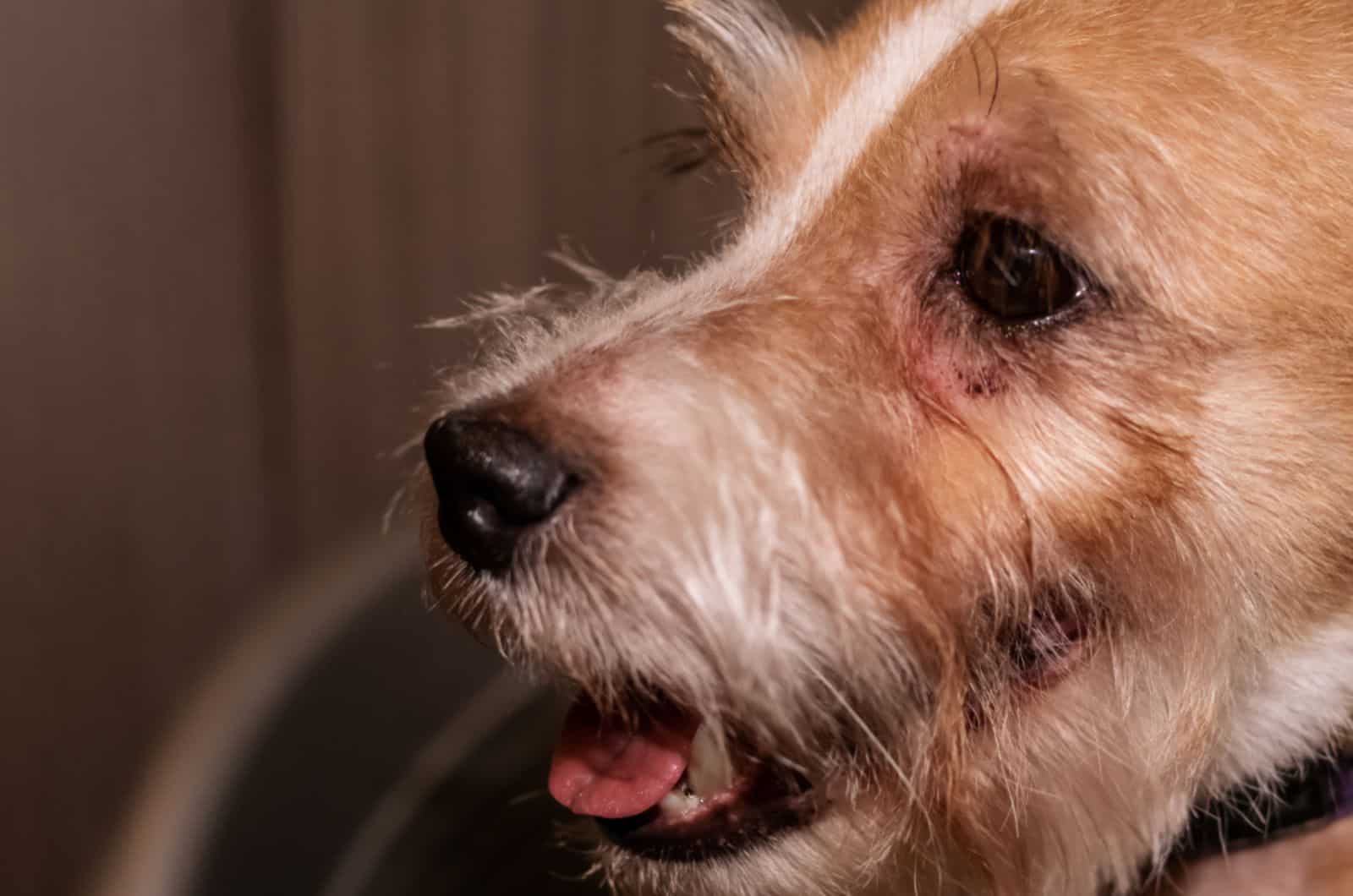
Dogs can get into all sorts of predicaments. Whether they’re biting each other’s necks, nibbling on ears, or getting a bump on the head. In these situations, it is not rare that their eyes receive a scratch or two, making them watery or swollen.
How To Help Your Dog
If you believe that your dog’s eye got injured during playtime or other outdoor activity, take them to the vet for a thorough eye exam and proper treatment.
7. Bacterial Infections
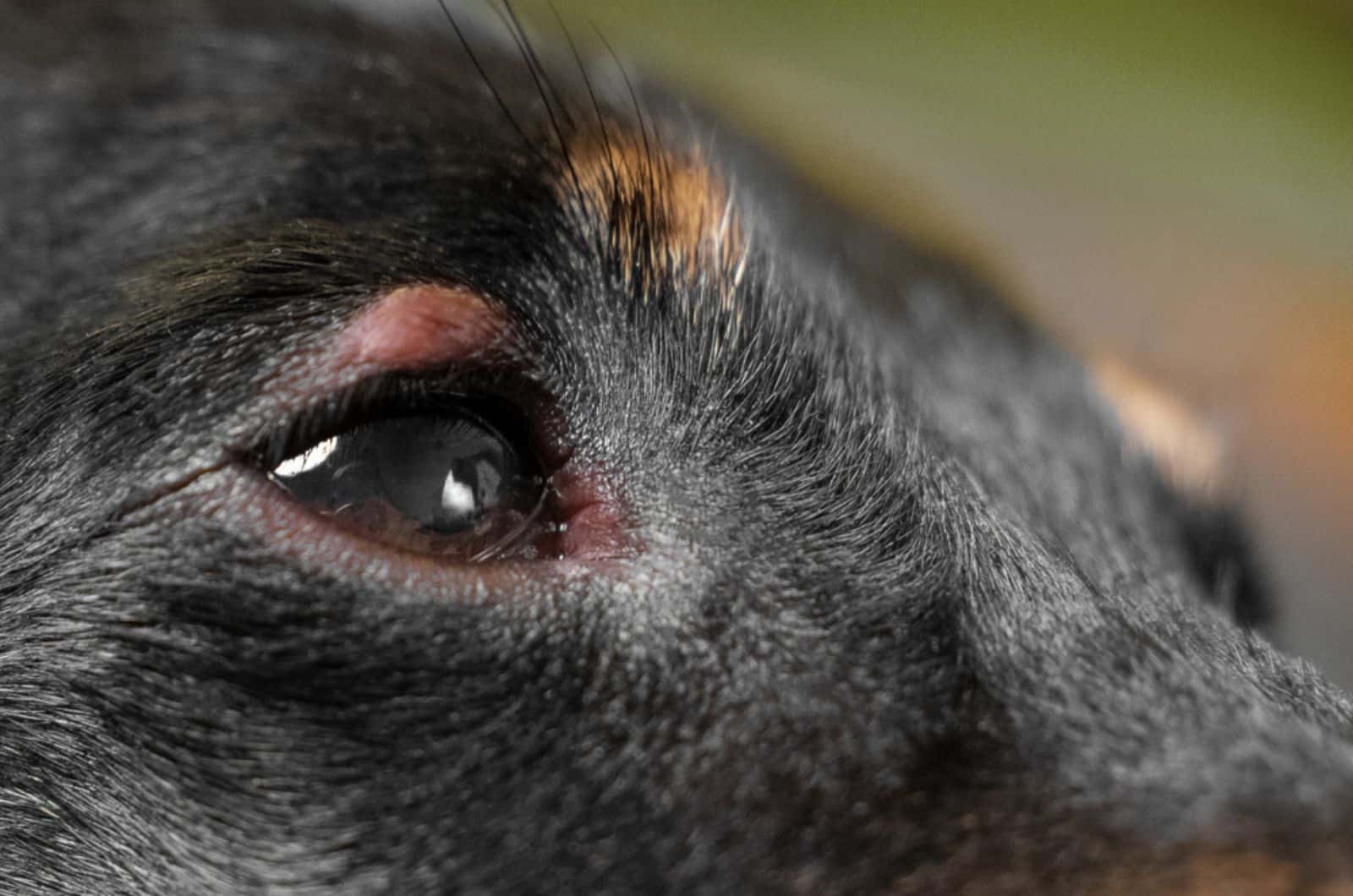
Eye injuries in dogs can cause secondary bacterial infections. However, primary infections such as canine brucellosis and leptospirosis may also cause eye redness, irritation, and excessive tearing (2).
Bacterial infections can also make the dog’s eye discharge foul-smelling, white, or even green!
How To Help Your Dog
Depending on the type and severity of the infection, your vet may recommend antibiotics or other medications to help clear up the problem.
Take your pooch to the vet to figure out what kind of treatment he needs!
8. Viral Infections
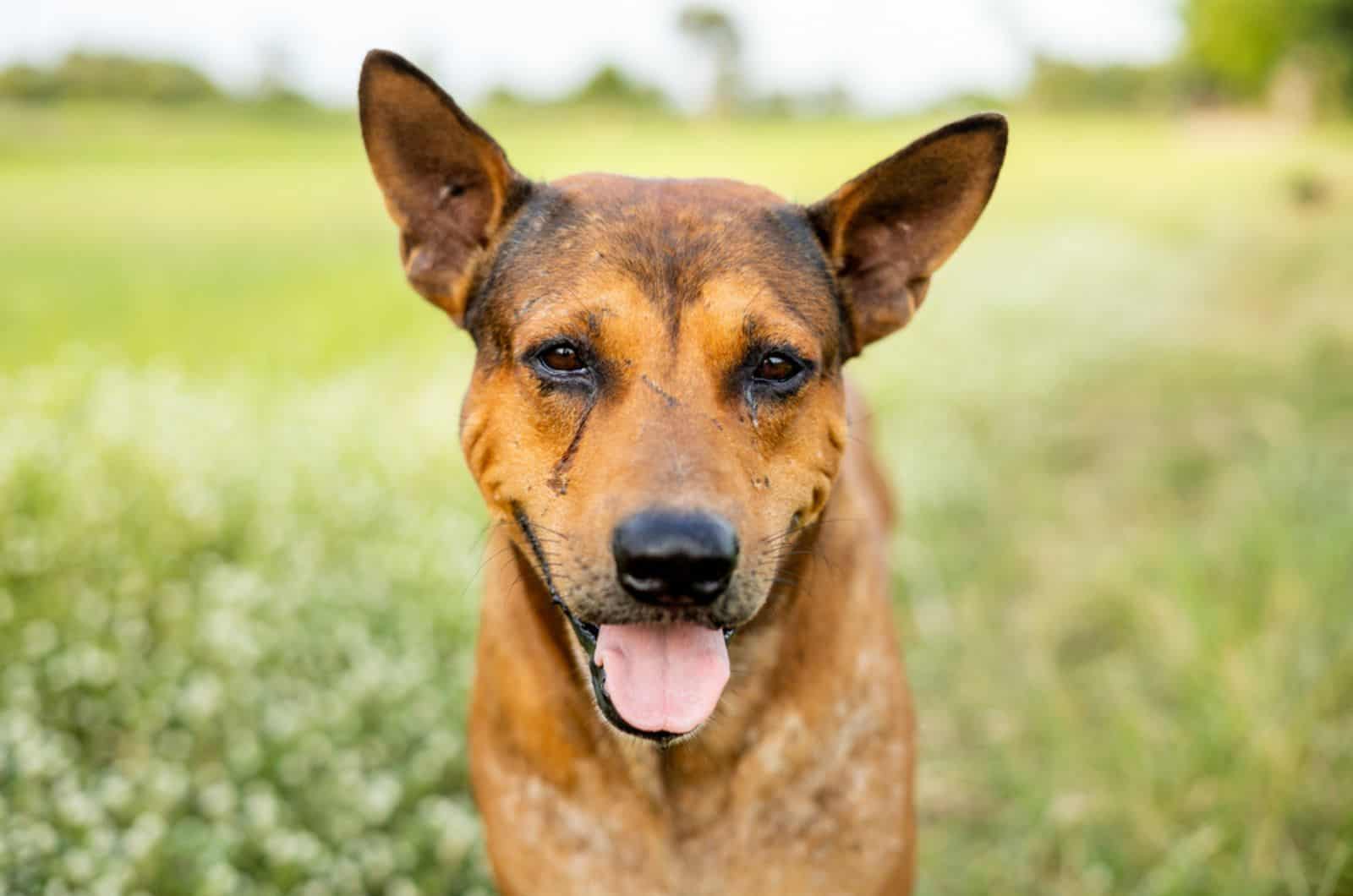
A dog’s watery eyes could be due to a viral infection like distemper (3), herpes, hepatitis, or canine influenza.
These infections are very serious and they can cause other symptoms like coughing, sneezing, fever, and fatigue.
How To Help Your Dog
Don’t wait – rush your pup to the vet!
Viral infections can be spread to other dogs and they can progress very quickly. Your vet will do a physical exam, blood work, and some additional tests to help make a proper diagnosis.
9. Fungal Infections
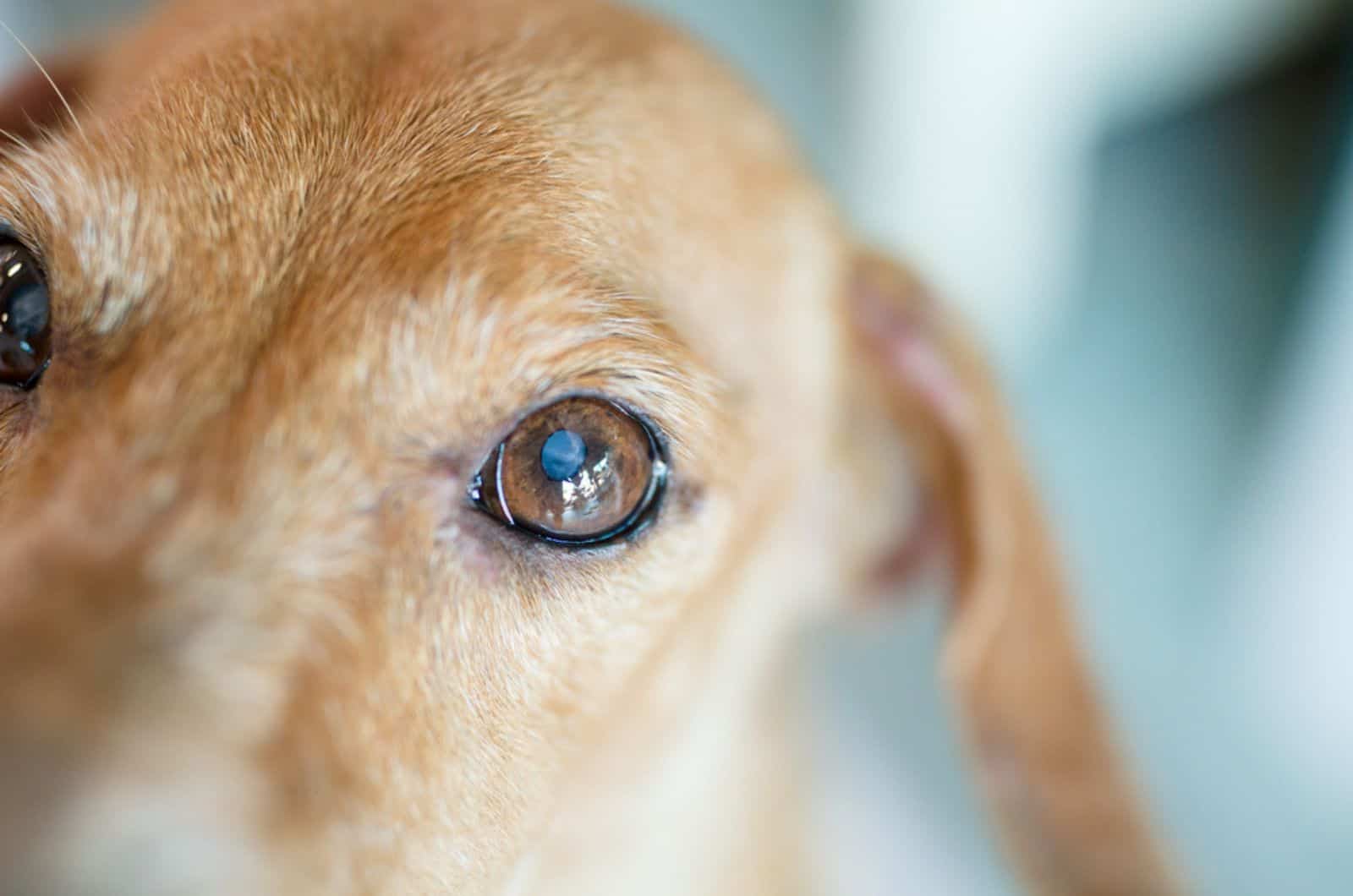
Another culprit could be a fungal infection like blastomycosis or aspergillosis that can also lead to redness, swelling, odd eye discharge, hair loss around the eyes, or in severe cases – loss of an eye!
How To Help Your Dog
This is definitely not something to ignore and you should contact your vet as soon as possible.
You should also clean the dog’s environment thoroughly, as well as his toys, blankets, and bedding.
10. Parasitic infestations
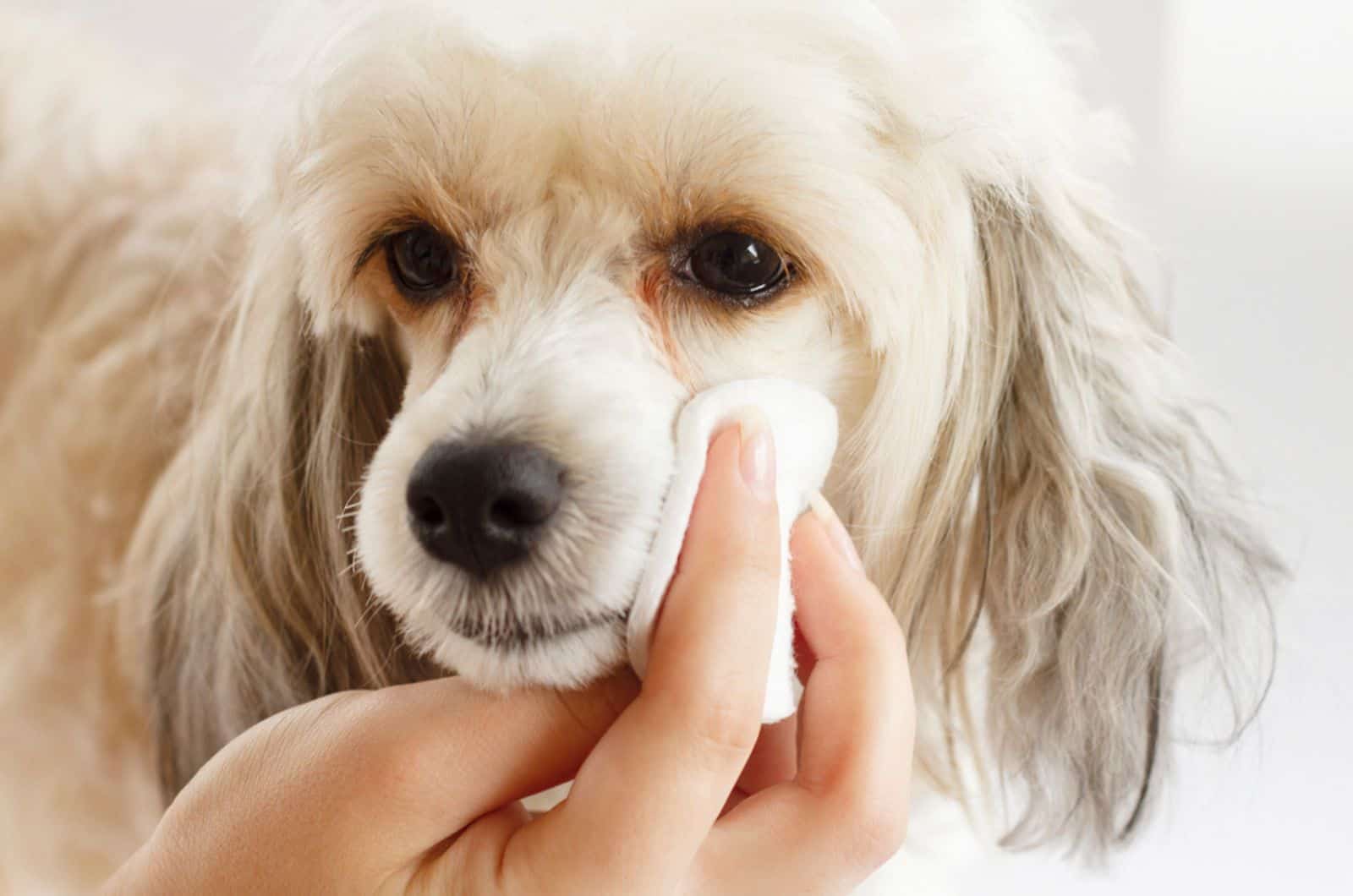
Parasitic infestations like Thelaziasis can also cause watery eyes in dogs. Thelazia californiensis is a small worm that lives on the surface of the dog’s eyes (4). Imagine how uncomfortable that is!
In addition to watery eyes, you might notice your dog winking or squinting.
How To Help Your Dog
This parasitic infection often requires surgery, so it is best to call your vet pronto!
Until you get to the vet, you can help your dog’s watery eyes by gently cleaning them with a sterile gauze.
11. Cherry Eye
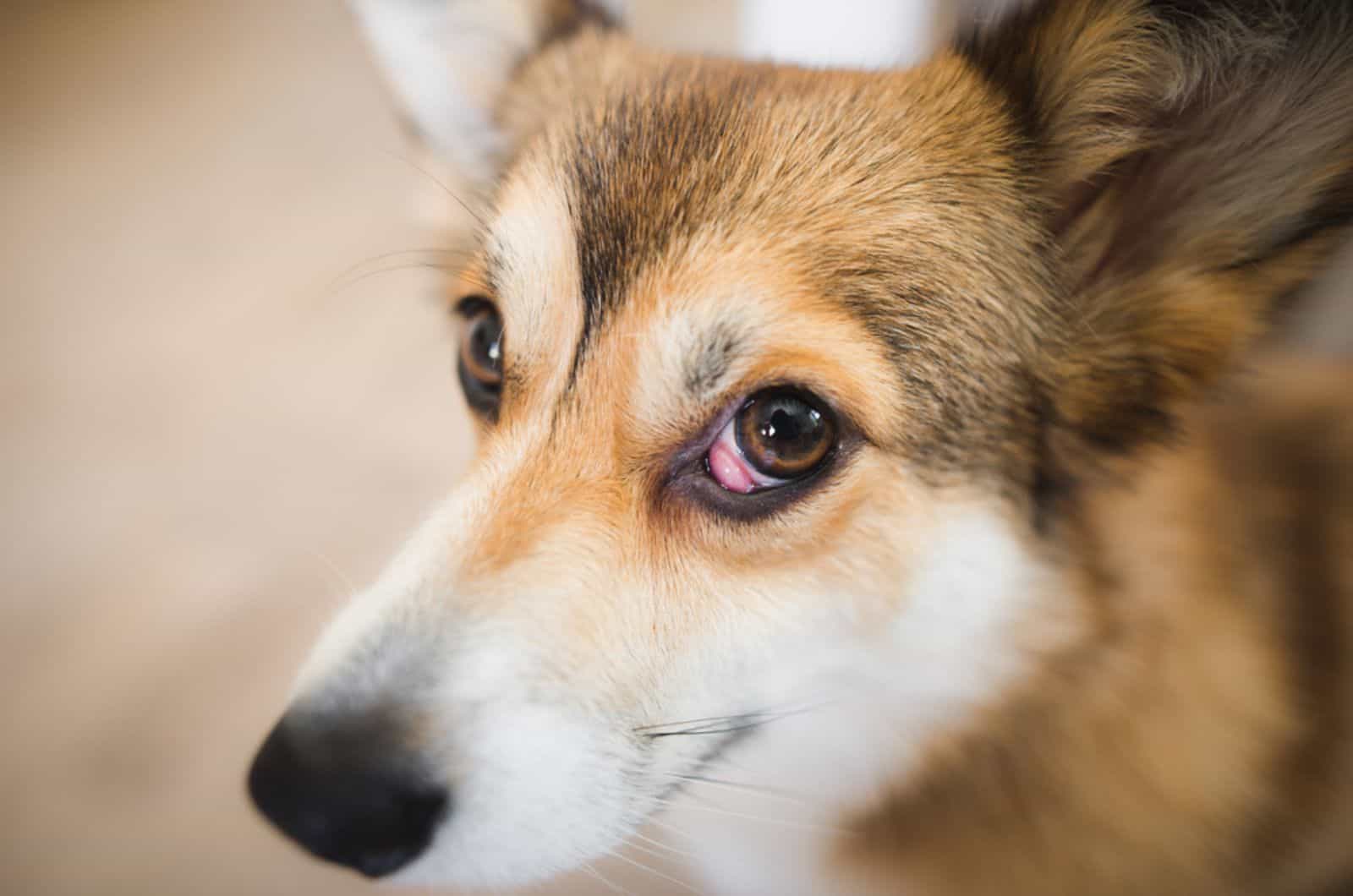
Cherry eye is a common condition where the gland in the dog’s third eyelid decides to pop out of its normal position. This creates a visible red lump in the corner of their eye that looks like a shiny cherry.
This eye condition is often seen in Cane Corso dogs, Beagles, and Bulldog breeds.
How To Help Your Dog
Treatment for cherry eye usually involves surgery to reposition the gland back into its normal position and secure it there.
12. Congenital Issues
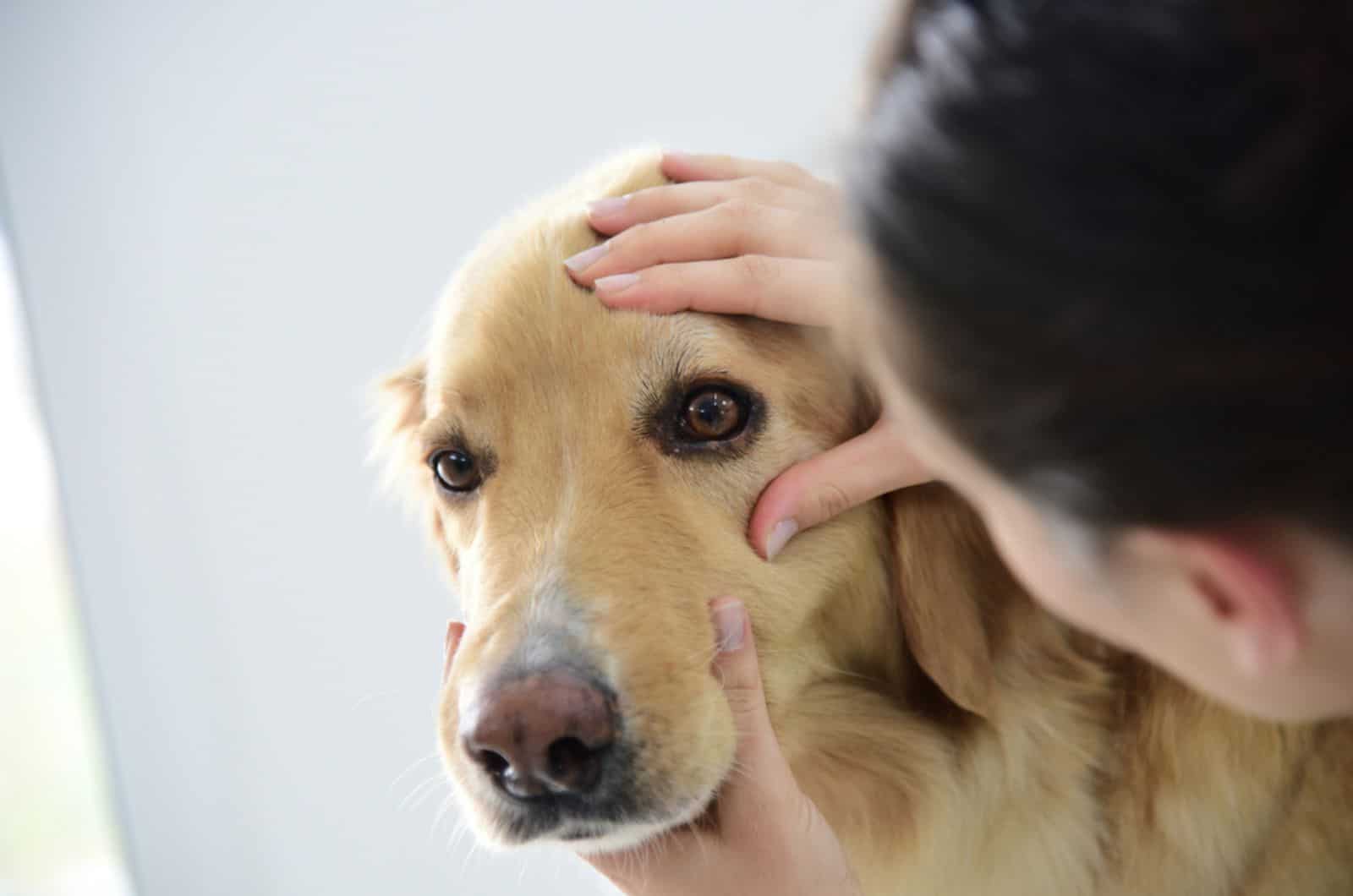
Some breeds like Newfoundlands, Old English Sheepdogs, and Rottweilers are prone to congenital eye defects (5). Different eye abnormalities can cause your dog to have watery eyes.
How To Help Your Dog
It is best to take your dog to the vet if you suspect that it has eye problems due to the breed’s predisposition.
While you can not prevent congenital issues yourself, you can choose to buy from reputable breeders whose pups have undergone various health screenings.
13. Keratoconjunctivitis Sicca (Dry Eye)
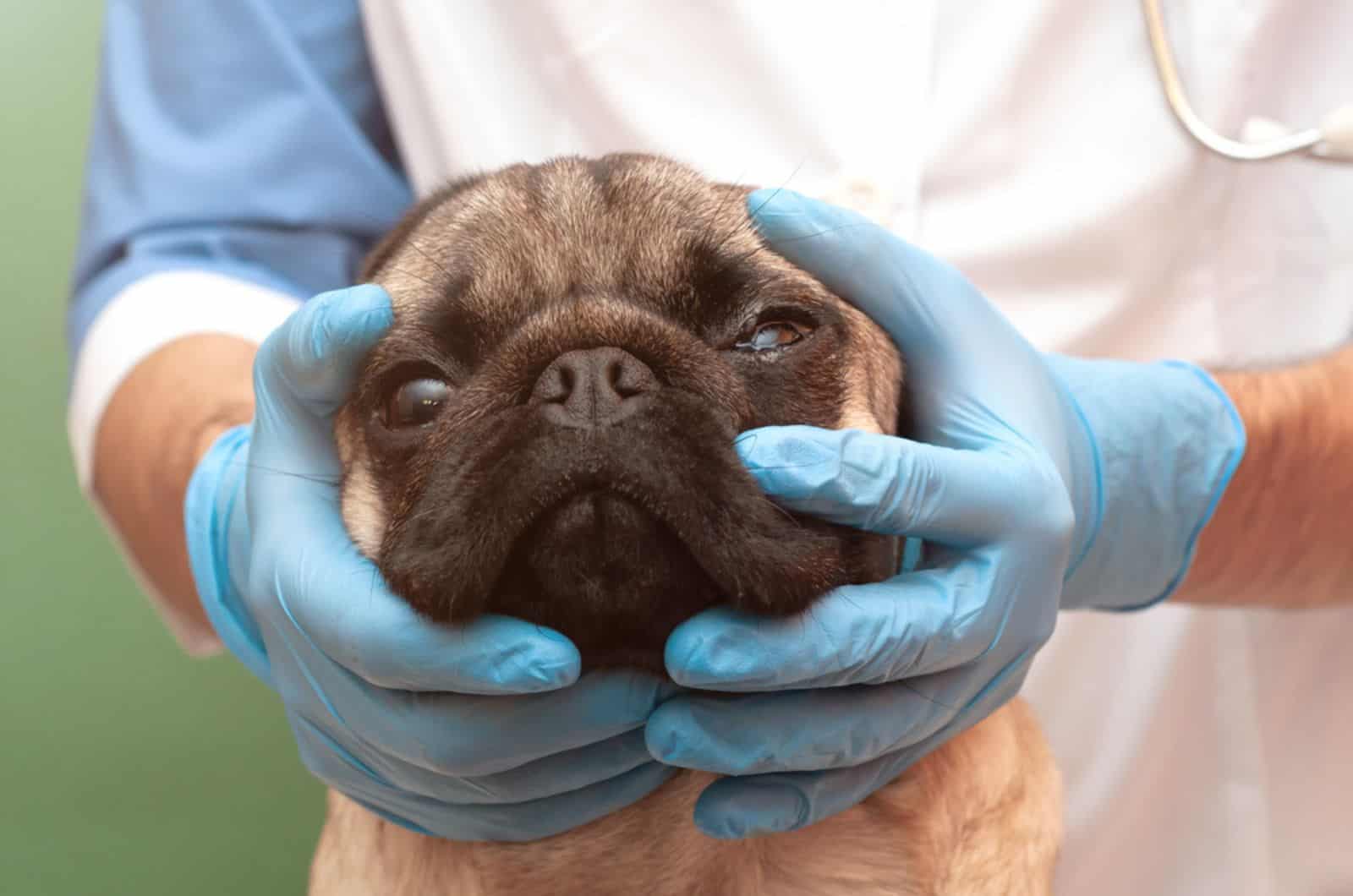
Keratoconjunctivitis Sicca, or dry eye, can cause your dog’s eyes to water, ironically enough. Other symptoms include eye redness, mucopurulent discharge, and squinting.
How To Help Your Dog
If you suspect your dog is suffering from Sicca, then the best thing to do is call your vet to ask for advice.
Thankfully, there are easy treatments available, like eye drops or ointments, that can help alleviate this issue (6).
14. Distichiasis

Distichiasis is a bit different from an eyelash or two that are growing in different directions.
It is a condition where extra eyelashes grow on the inside of the eyelid, leading to watery eyes and possible corneal damage.
How To Help Your Dog
There is little you can do at home to treat this canine eye issue. You could help your dog by cleaning his eyes with a sterile gauze and keeping him away from irritants.
Surgery is the most effective treatment for this condition (7).
15. Entropion
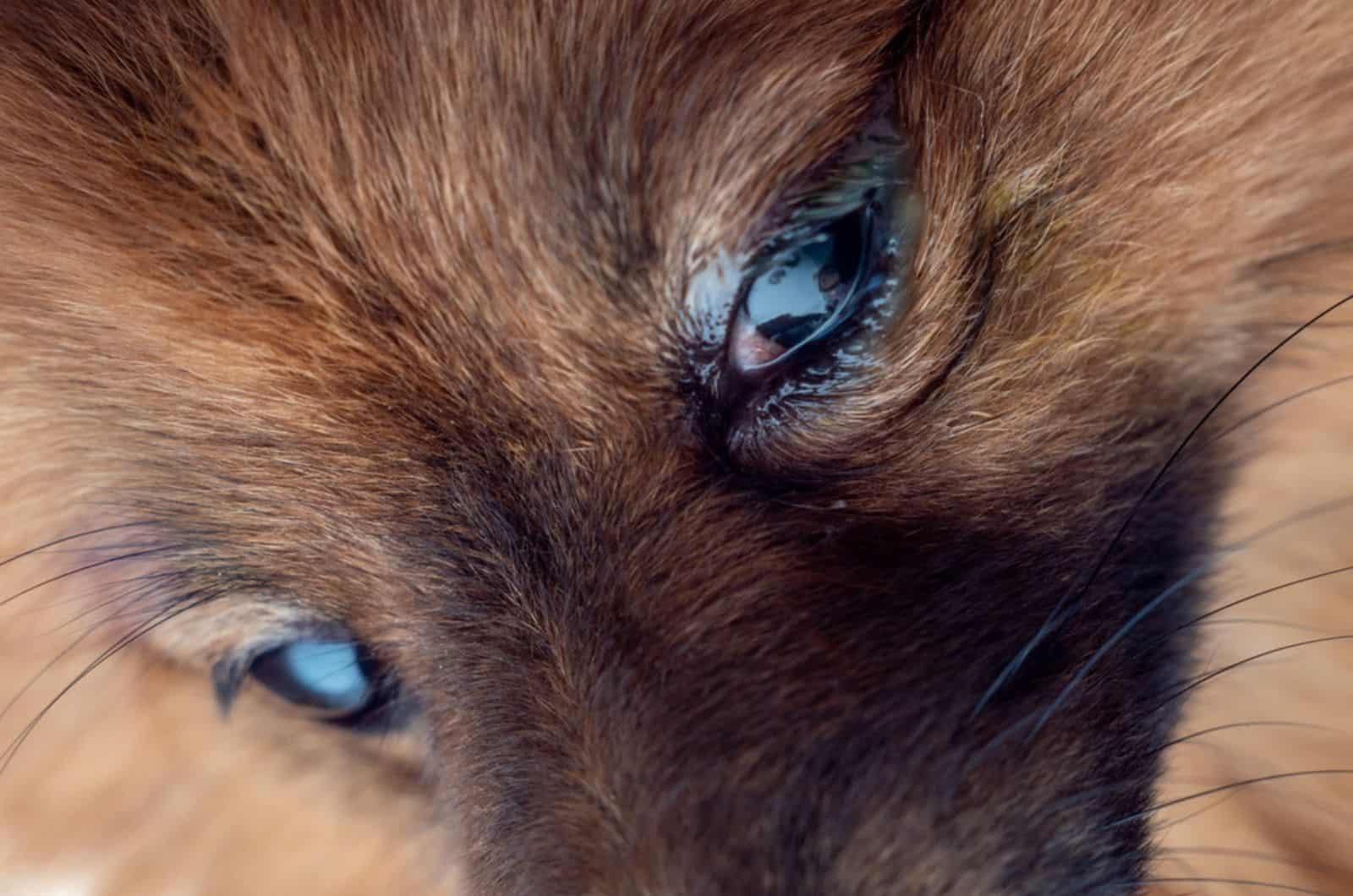
Entropion is a condition where the dog’s eyelid folds inward, causing the lashes to rub against the eye. Dog breeds like Dalmatians, Akitas, Boxers, and Vizslas may be genetically predisposed to these issues. This is commonly due to excessive skin around the eyes.
Aside from watery eyes, you may notice your pup is squinting, has discharge, and a third eyelid showing.
How To Help Your Dog
The good news is that entropion could go away on its own in puppies during development. However, this may not always be the case and surgery is often necessary to correct the issue.
Before you take your dog to the vet, you can help him by applying eye drops and cleaning the surrounding area with a sterile gauze.
16. Ectropion

Ectropion is an opposite condition to entropion. Ectropion means that the dog’s lower eyelid droops or turns outward. This causes the eyelid to roll away from the eye, leaving the mucosa exposed and vulnerable to irritation, or infection.
Of course the dog’s eye will feel dry and irritated which is why it will produce more tears as a way of defending itself!
How To Help Your Dog
Similar to entropion, ectropion is a condition that should not be treated at home.
It is most common in breeds with loose facial skin, such as Bloodhounds and St. Bernards and it often requires surgery.
17. Conjunctivitis
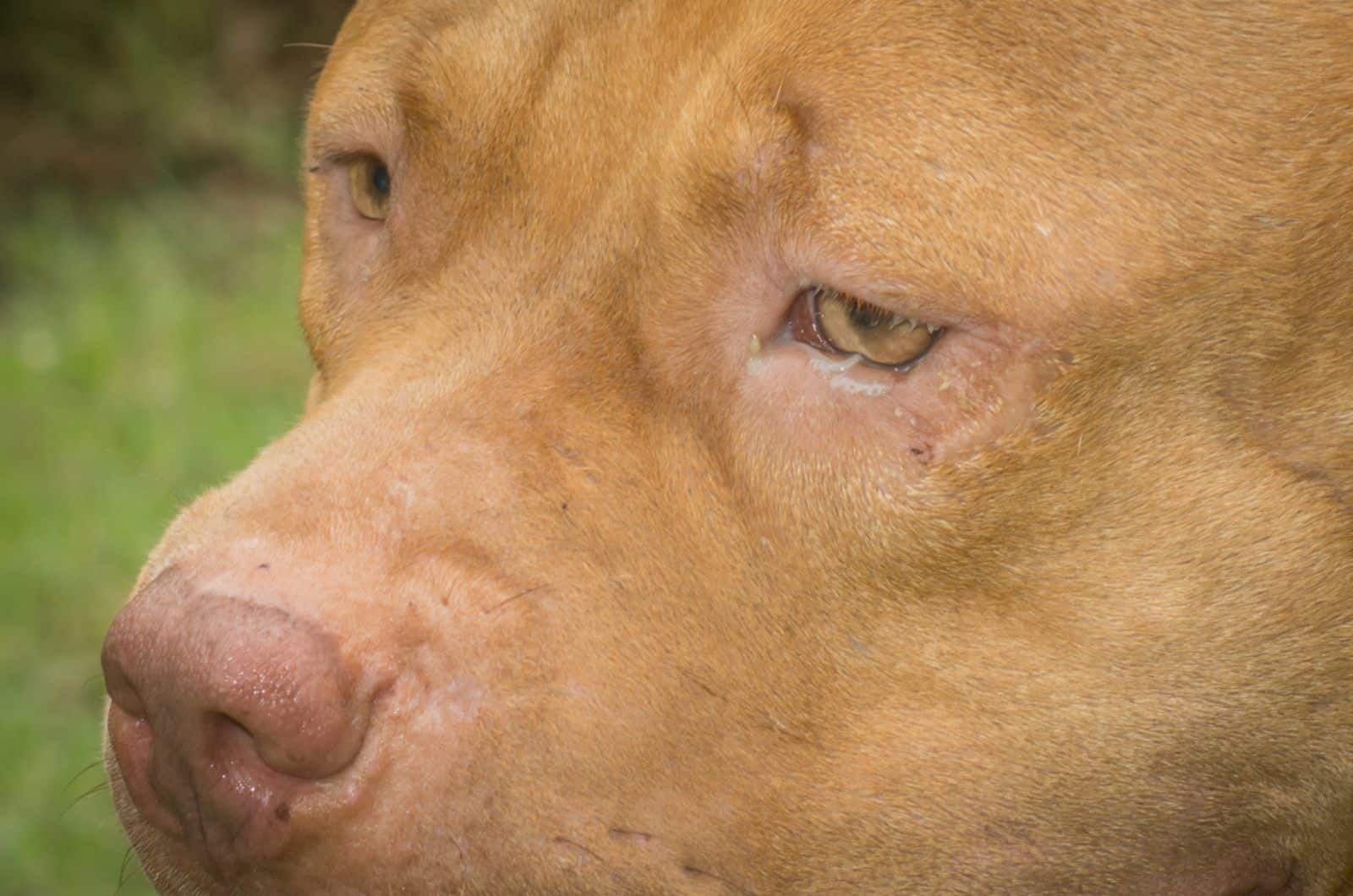
Conjunctivitis is often referred to as pink eye, because it causes redness and irritation (8).
Dogs with conjunctivitis may experience difficulties to open their eyes due to the accumulation of purulent discharge. This condition could develop due to bacterial infections.
How To Help Your Dog
Before you head to the clinic, you can put some cold compresses on the dog’s affected eye to soothe the irritation.
Your vet will most likely prescribe eye drops or ointments to help alleviate the symptoms.
18. Corneal Ulcer
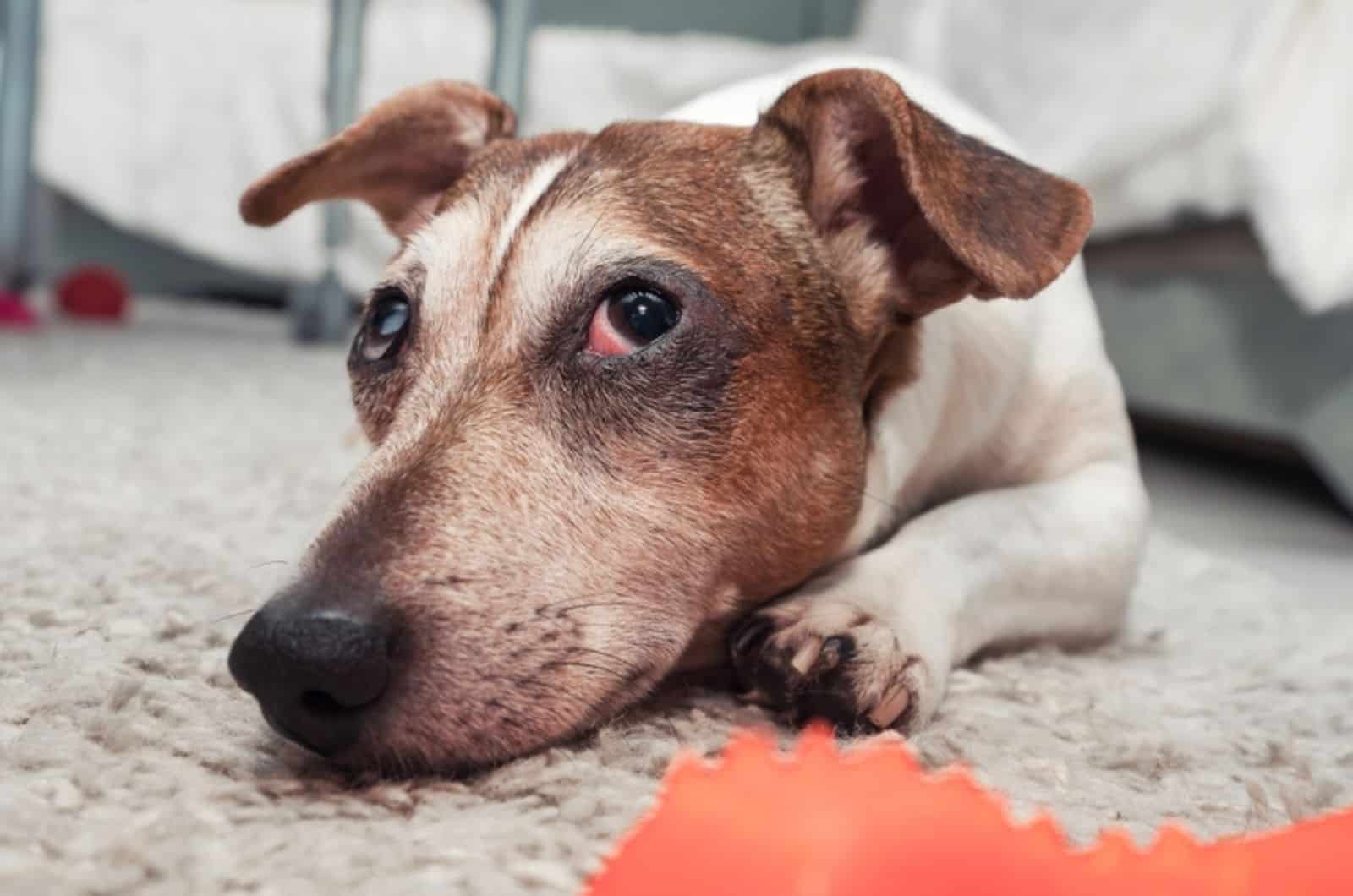
A corneal ulcer is a sore on the dog’s cornea that can cause watery eyes, along with other symptoms like redness, third eyelid showing, discharge, and even sensitivity to light.
This condition is commonly caused by an injury, but it can also be an age-related health problem.
How To Help Your Dog
The good news is that this condition could be cured with topical antibiotics- But, in severe cases, surgery is the best option.
To help you pup with corneal ulcer, visit your vet and have them put up an effective treatment plan.
19. Dacryocystitis
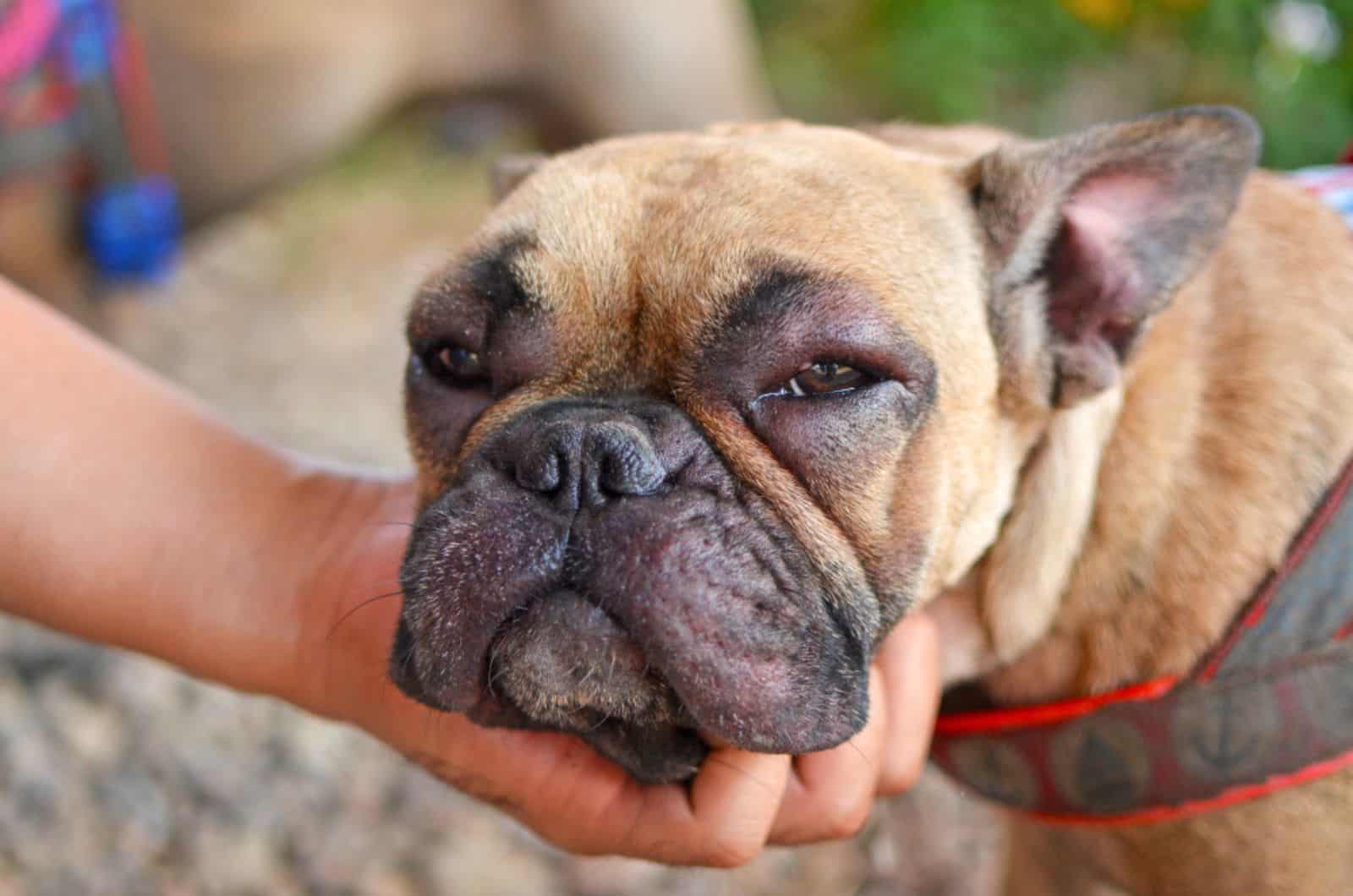
Dacryocystitis is a condition where the tear duct becomes infected and inflamed. It can be caused by foreign bodies or by a bacterial/viral infection. This may also lead to tear duct blockage (9).
This condition causes excessive tearing, elevated body temperature, along with swelling and purulent discharge from the eye.
How To Help Your Dog
Treating dacryocystitis in dogs depends on the severity of inflammation. Most of the time vets will prescribe antibiotics.
But in some cases, surgery may be necessary to treat the issue.
20. Glaucoma
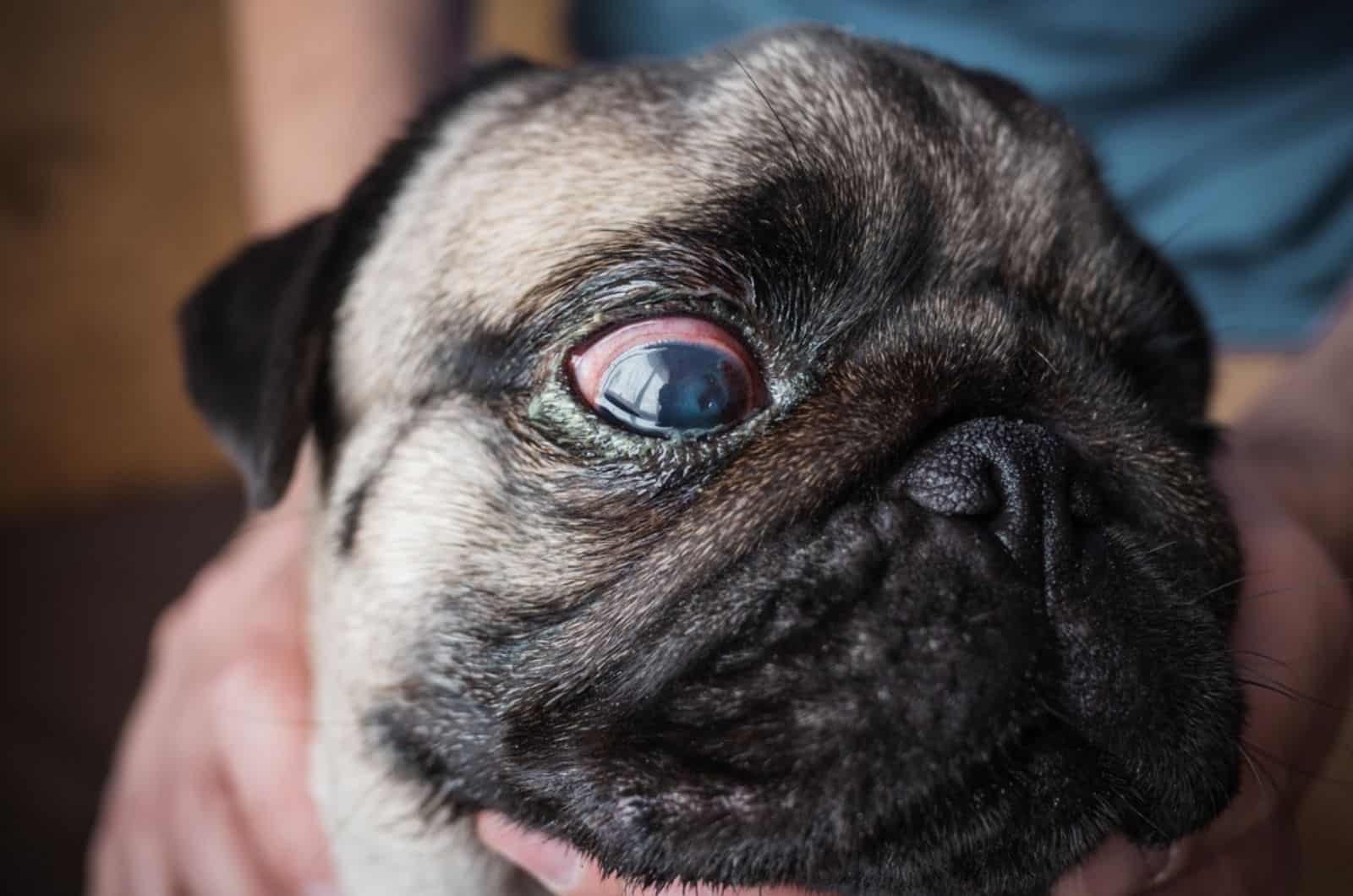
Canine glaucoma is a condition where pressure builds up inside the eye, leading to vision loss, loss of appetite, pain, lethargy, and excessive tearing. While this condition is often related to senior dogs, it may affect younger dogs as well.
Classification of glaucoma is important to enable proper diagnosis and therapy.
How To Help Your Dog
The treatment of canine glaucoma often involves medication prescribed by the veterinarian.
However, surgery is the most effective way to relieve the pressure (10).
21. Tumor
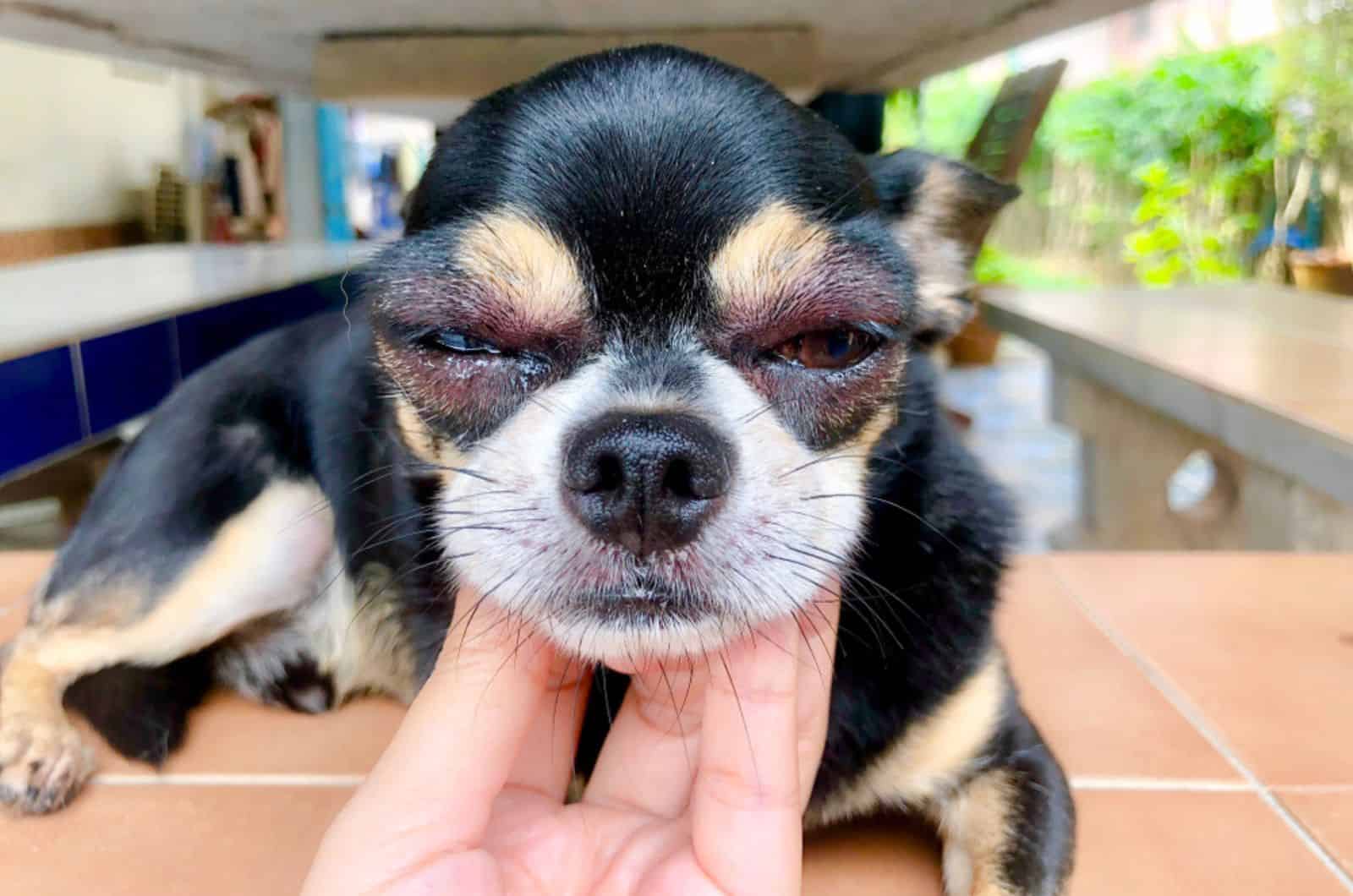
Lastly, even though uncommon, an intraocular or an eyelid tumor can also cause watery eyes. Depending on what part of the eye they affect, dogs may show other symptoms like redness, discharge, eyes rolling back, and swelling.
How To Help Your Dog
Treatment usually involves surgical removal of the tumor, although additional treatments like radiation or chemotherapy may be necessary.
Treating eye/eyelid tumors is a challenge and the outcome greatly depends on the type of tumor and veterinarian’s competence.
Final Thoughts
As we have seen, dogs of all breeds, ages, and sizes can experience watery eyes.
The good news is that with proper care and treatment, most cases of watery eyes can be easily resolved. If you notice your dog’s eyes are watery, make sure to contact your vet.
Your lovely canine companion will go back to giving you those adorable puppy-dog-eyes without any discomfort in no time!
References:
1. Care, T. P. (n.d.). Eye discharge (Epiphora) in dogs. Treatwell Pet Care Learning Centre.
2. SG;, T. W. M. S. J. K. (n.d.). Leptospirosis and Panuveitis in a dog. Veterinary ophthalmology.
3. Ricci I;Cersini A;Manna G;Marcario GA;Conti R;Brocherel G;Grifoni G;Eleni C;Scicluna MT; (n.d.). A canine distemper virus retrospective study conducted from 2011 to 2019 in central Italy (Latium and Tuscany regions). Viruses.
4. Thelazia – an overview | ScienceDirect Topics. (n.d.).
5. Mellersh, C. S. The genetics of Eye Disorders in the dog. Canine genetics and epidemiology. (2014, April 16).
6. Best, L. J., Hendrix, D. V. H., & Ward, D. A. Diagnosis & treatment of keratoconjunctivitis sicca in dogs. Today’s Veterinary Practice. (2022, February 16).
7. Distichiasis or ‘extra eyelashes’ fact sheet. Davies Veterinary Specialists. (2020, June 4).
8. Sandy Walsh, R. V. T. Diagnosing, treating, and managing causes of conjunctivitis in dogs and cats. Today’s Veterinary Practice. (2022, April 29).
9. CC;, S. A. D. G. W. J. B. (n.d.). Dacryocystitis in dogs caused by foreign bodies-diagnosis and therapy in 14 cases. Veterinary ophthalmology.
10. Agraham; Acute glaucoma: A true emergency. Today’s Veterinary Practice. (2022, June 21).
